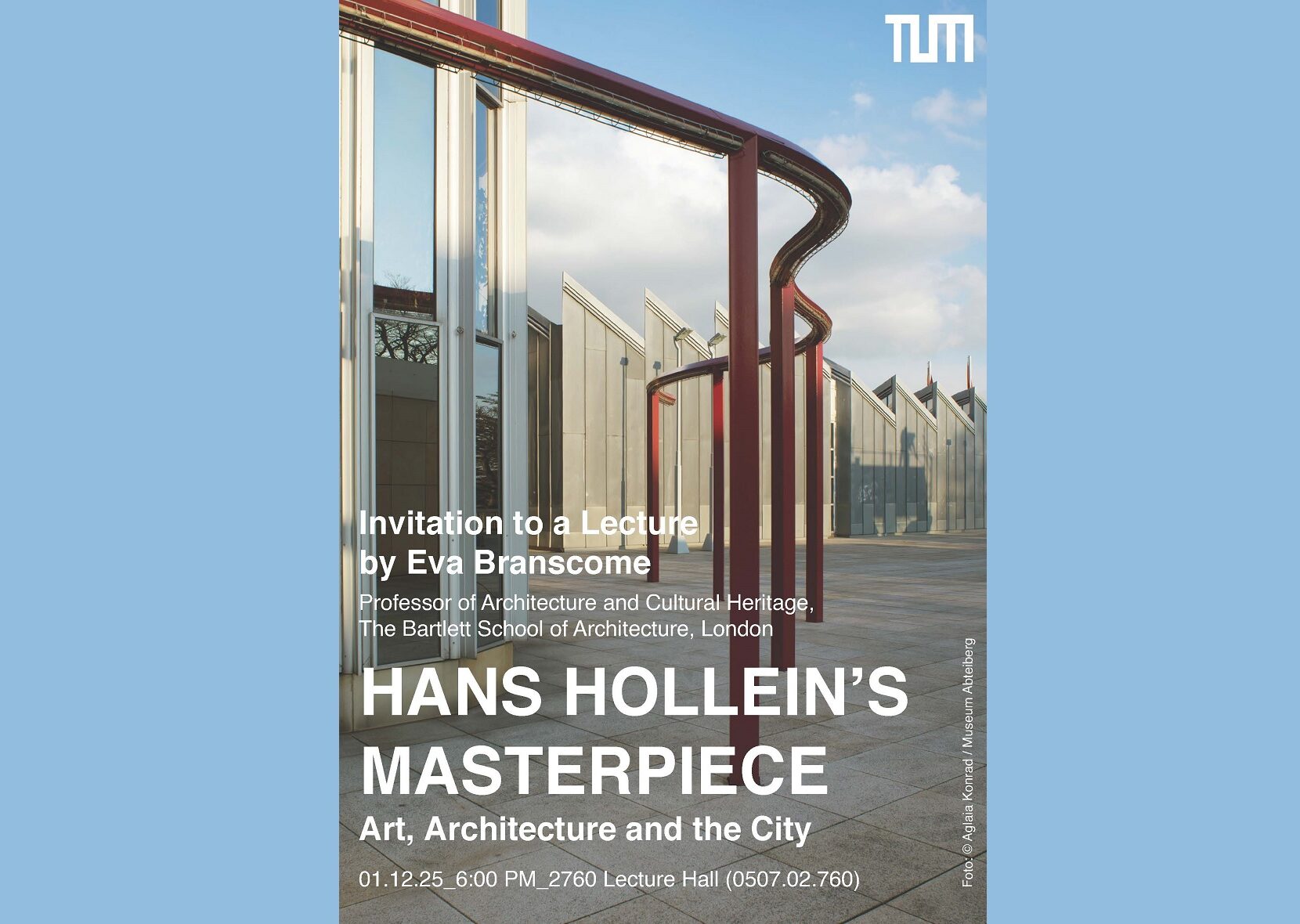HANS HOLLEIN’S MASTERPIECE Art, Architecture and the City
Invitation to a Lecture
by Eva Branscome
Professor of Architecture and Cultural Heritage
The Bartlett School of Architecture
HANS HOLLEIN’S MASTERPIECE
Art, Architecture and the City
Location: Technical University Munich/ Arcisstr. 21/ Lecture Hall: 2760
Entry: Free
BEFORE BILBAO:
THE CASE STUDY OF HANS HOLLEIN‘S MUSEUM IN MÖNCHENGLADBACH
When the celebrated German curator, Johannes Cladders, became director of the Städtisches Museum Mönchengladbach in 1967, that post-industrial town was best known for football. Housed in a neo-gothic bourgeois mansion, the museum held an odd assembly of cultural objects, religious relics and twentieth-century artworks. Packing those items away, Cladders reinvented the venue through a sequence of ground-breaking exhibitions. Starting with Joseph Beuys’s first-ever retrospective exhibition in 1967, Cladders put the museum onto the international map. From the outset, Cladders’ discontent with his building was evident, so he lobbied for a new purpose-built museum to promote the emerging avant-garde.
Hans Hollein was appointed in 1972 to design the new Mönchengladbach museum, opening in 1982. It was instantly lauded by international critics for integrating externally into the city as an architectural collage of building types that stood out in contrast to the monolithic megastructures that had been so popular in the 1960s and 1970s. Its town planning established a dialogue with the ancient Gothic abbey, but also drew from the post-war streetscape, fusing with the fragmented fabric of the place as a surrogate urban landscape. Over 20,000 people came to see the museum during its opening week, becoming a pilgrimage for those interested not so much in avant-garde art, but architecture. Charles Jencks, Kenneth Frampton, and Joseph Rykwert went there and wrote about the place. The museum led to a new type of architectural tourism where people flocked to the city to see the building, and Frank Gehry has stated that the Guggenheim in Bilbao would not have been possible without this important precedent.
